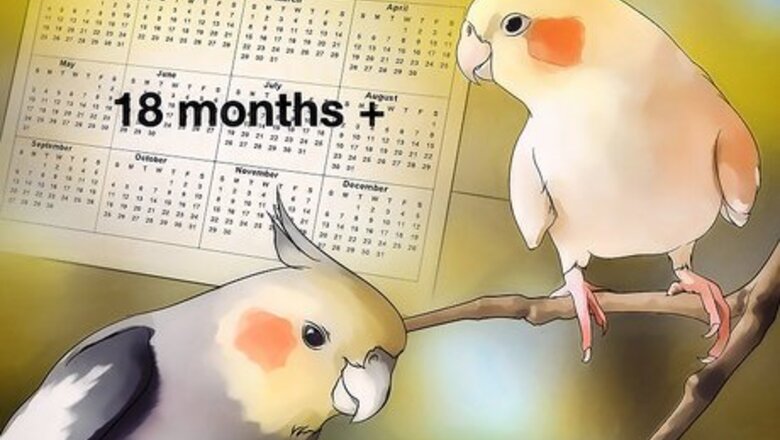
views
Finding the Right Pair
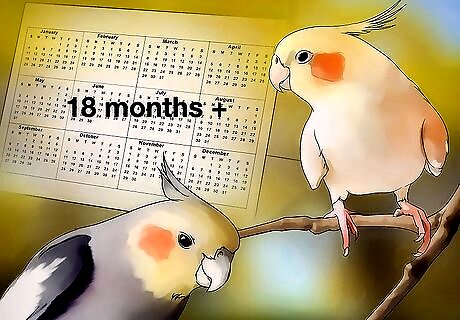
Make sure your cockatiels are old enough. For breeding purposes, your male and female cockatiel should be at least 18 months old. Younger females may experience problems like egg binding and younger birds also may not take good care of their babies. Egg binding is a condition where the eggs become stuck in the cloaca. This may lead to an infection and even death.
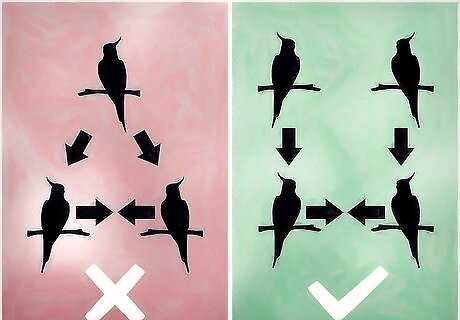
Ensure that the pair is not related. Related birds have a higher chance of having weak or deformed babies. If you are not sure if your birds are related, then contact the person who bred your cockatiels to find out if they are related. Do not breed them if they are related.

Inspect your birds for signs of good health. Before you decide to breed to cockatiels, it is a good idea to bring your birds to an avian veterinarian to get a clean bill of health before breeding. This is will help to protect against any diseases or defects your birds may have. Weight is also a good indication of health in cockatiels. Overweight. Being overweight increases the chances of infertility in both sexes and egg binding in the female. If you are not sure if a cockatiel is overweight, try to feel your bird’s keel or breastbone. If you cannot feel the breastbone, then it is overweight. Underweight. Being underweight may indicate that your bird has a disease or that one bird is guarding the food dish and preventing the other from eating. Find out what is causing your bird to be underweight before you start breeding your cockatiels.
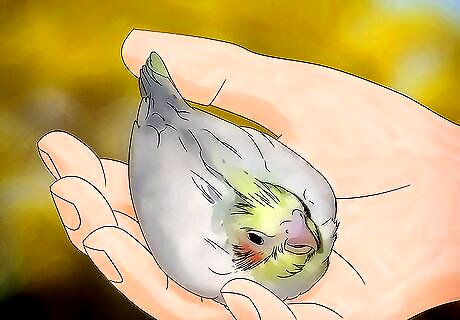
Keep in mind that not all cockatiels make good parents. You may have to hand raise the babies if the parents are negligent or treat the babies poorly. Make sure that you have the time and energy to devote to hand raising baby cockatiels before you decide to breed them.
Preparing to Breed

Provide 10-12 hours of natural or bright artificial light per day. Cockatiels will breed any time of year, but they need a decent amount of light in order to breed. Make sure that your cockatiels have a source of natural or bright artificial light for 10-12 hours per day.
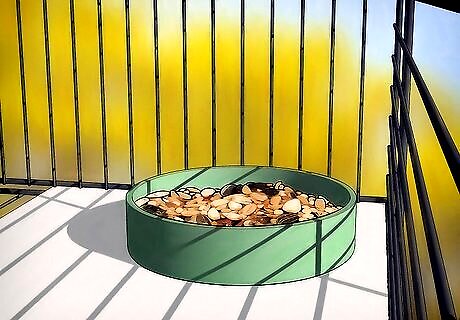
Feed your birds well. Before breeding, it is important to ensure that your birds are eating well. Feed them a balanced diet of food that is meant for cockatiels. Check on your birds often to make sure that both cockatiels have equal access to food and water dishes. If one bird is guarding the food and water, then you can add extra dishes of food and water. Good foods to give your cockatiels include: cockatiel seed mix soft foods such as greens, pasta, cooked rice, cooked beans, moist wheat bread sprouted seeds cuttlebone or mineral blocks for calcium supplements (to sprinkle over other foods) such as spirulina, Echinacea, and Prozyme fresh, clean water (change it a couple of times per day)
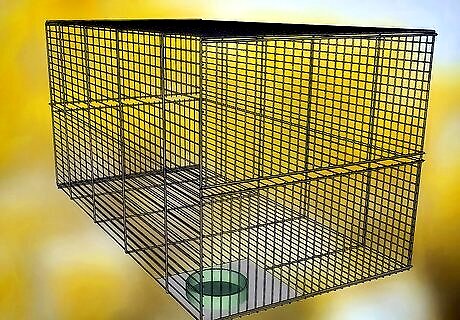
Put your breeding pair into a large cage together. Your cockatiels will need plenty of room for breeding and even more space after their young have hatched. Make sure that the cage that you put your cockatiel pair into is 6 feet by 3 feet by 3 feet. You can place the pair into their enclosure a few weeks before you provide a nest box so they can get to know each other and to get into sync for breeding. Place the cage in a quiet part of your home to give the couple the privacy and quiet they will need to breed, brood, hatch and raise their young.
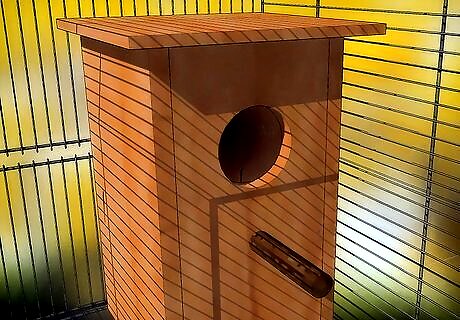
Create a nest box. After the pair has been together for at least two weeks and they are getting along well, then you will then need to provide them with a nest box. As you choose a nest box, some things to consider include: Material. There are many types of nest boxes available including metal, plastic and wooden ones. Wood is a good choice because cockatiels will chew on the entrance to customize it to their specifications. Size. A one foot by one foot box is sufficient for breeding cockatiels. Rear access door. Some nesting boxes come with a rear access door so that you can check on the chicks without disturbing the hen. Bedding. Cockatiel parents will use bedding to make a cozy and safe nest for the chicks. The best materials for nesting are low dust pine shavings or uncolored paper materials like newspaper or plain white paper towels. Do not use cedar shavings because the oils in this material can kill or injure the chicks.
Breeding Your Cockatiels
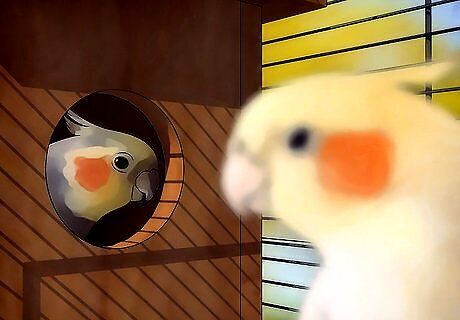
Watch the male cockatiel prepare the nest. You will know that your cockatiels are preparing to mate when the male starts preparing the nest. The male will gnaw on the nest box opening to enlarge it to the size that he prefers. He will also arrange the bedding material in a way that he likes. When he has made the box the way that he wants it to be, then he will allow the female to enter.
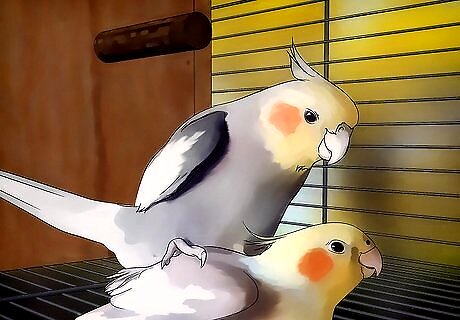
Observe the signs of mating. When it’s time to mate the male cockatiel will do a mating dance. During this dance, he will bob his head, hop around, and sing. You will also notice the birds grooming each other often. When the female is ready to mate she will crouch down. This position makes it possible for the male to mate with her. Mating may take up to a minute and then the male will fly away. The female cockatiel should lay her eggs about two weeks after mating.
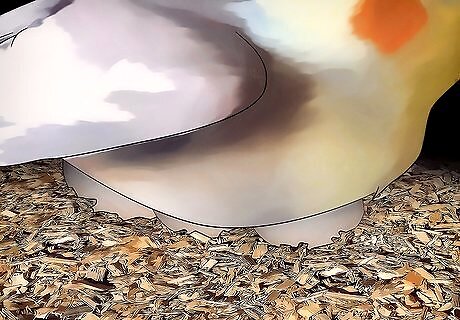
Allow the parents to brood their eggs. Each of the parents will take turns brooding the eggs, but the female will sit on them most of the time. You may notice that both parents pluck out some of their own feathers to expose a bit of bare skin. This is called a “brood patch” and the parents do this so that their bare skin can make contact with the eggs. Hatching takes about three weeks, but she will lay eggs for about a week before she is ready to incubate them. She will lay an egg about once every 48 hours until she has laid a clutch of about two to eight eggs. The male cockatiel will provide food for the female cockatiel while she broods the eggs.
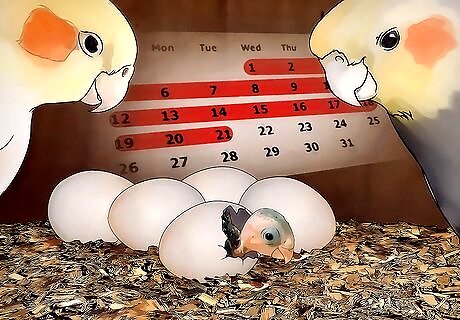
Leave the nest alone. After the 21 day incubation period, the eggs will hatch. You can take a quick peek at the nest box to make sure there are no dead or distressed chicks but otherwise try not to disturb the new family. Let the parents and babies have some time and privacy to bond. Cockatiels will not begin the weaning process (eating without the help of a parent) until they are about eight to 10 weeks old. At this point, you may want to separate male and female chicks from each other to prevent breeding. Brothers and sisters may pair up and mate if the conditions are right, so it is best to separate male chicks from female chicks to prevent unwanted babies.
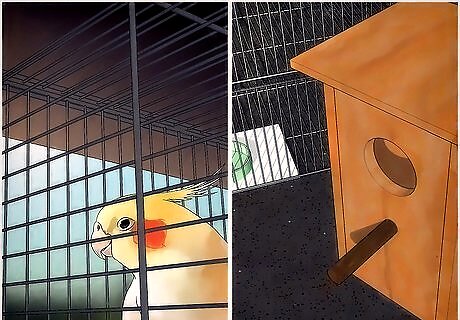
Reduce breeding activity. After your cockatiels have mated and produced chicks, you may want to take steps to prevent them from mating again. There are a few different things that you can do to prevent mating. Decrease light. Providing a little less light per day will discourage breeding. For example, you can reduce the amount of light that your cockatiels receive from 10-12 hours to about eight hours per day. This will simulate winter conditions and make it less likely that your cockatiels will mate. Remove the nest box. Once your cockatiels have finished using the nest box to brood and raise their chicks, you can remove the nest box from the cage. Eliminate soft foods. Do not feed your birds any soft foods, such as pasta, beans, and moist bread. However, make sure that you are still giving your birds plenty of nutritious food.




















Comments
0 comment